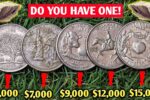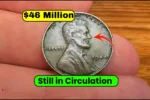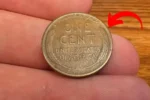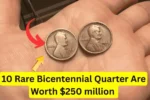The Rare Bicentennial Quarter Valued at $1 Million, Still in Circulation
We all use coins every day without giving them a second thought. Some of us toss them in jars, leave them in cars, or lose them under couch cushions. But what if one of those coins — one simple 25-cent piece — was actually worth $1 million?
It may sound unbelievable, but one specific Bicentennial Quarter from 1976 is said to be worth that much. This rare piece of U.S. history has caught the attention of coin collectors and enthusiasts alike, and yes — it might still be in circulation today.
Let’s take a deeper look into the story behind this extraordinary coin and how you can check if you’re lucky enough to have one.
What Is a Bicentennial Quarter?
The Bicentennial Quarter was released in 1976 to celebrate the 200th anniversary of American independence. It replaced the usual eagle-on-branch design on the reverse side with a special drummer boy and torch design.
It’s part of a special series that included redesigned versions of the quarter, half dollar, and dollar coin. While millions were made, a very limited number were struck under unique conditions — and that’s where the high value comes from.
What Makes One Worth $1 Million?
Not all Bicentennial Quarters are valuable. In fact, most are only worth face value. However, a very small number were minted in special ways:
-
Struck in 90% silver
-
Proof versions with mirror-like finish
-
Error coins (like double strikes, off-center images)
-
Coins struck on wrong planchets
-
Low mintage or experimental versions
One particular coin, which fits into the rarest of these categories, has been appraised by collectors to be worth $1 million. This is because of its rarity, condition, and historical value.
Overview Table: Key Details About the Rare Bicentennial Quarter
| Feature | Details |
|---|---|
| Coin Type | 1976 Bicentennial Quarter |
| Design | Drummer boy with torch and 1776–1976 date |
| Material (Rare Type) | 90% Silver or experimental metal |
| Estimated Value (Rare Version) | $1,000,000 |
| Where Found | Rare auctions, collections, possibly still in use |
| How to Spot | Mint condition, unusual errors, silver shine, proof |
Why This Coin Matters
Coins like this aren’t just metal. They are pieces of history. The Bicentennial Quarter was part of a celebration that reminded Americans of their independence, growth, and journey over 200 years.
A coin that was meant to be ordinary has become extraordinary due to its scarcity in a particular form. Collectors are willing to pay large sums because these coins are hard to find, even harder to verify, and nearly impossible to replace.
How to Check If You Have the Rare One
Want to know if your quarter could be the million-dollar coin? Here’s what to do:
-
Look at the Date: It must say 1776–1976.
-
Check the Back: The reverse should have the drummer boy and torch design.
-
Inspect the Edges: Silver coins won’t have a copper line on the edge.
-
Use a Magnet: Silver is not magnetic; if it sticks, it’s not silver.
-
Check for Errors: Any misprints, off-centers, or unusual designs.
-
Weight Test: A silver quarter weighs slightly more than a regular one.
-
Seek a Professional Appraisal: If you think you’ve got something rare, get it checked.
Why Are People Still Finding These in Circulation?
It’s surprising, but not all valuable coins are locked away in vaults. Some slip through the cracks — passed down through generations, forgotten in change jars, or unknowingly spent in stores.
Because millions of Bicentennial Quarters were made, most people don’t look at them twice. That’s why the rare versions could still be hiding in plain sight.
What Should You Do If You Find One?
-
Do not clean it – this can lower its value significantly.
-
Handle it carefully – preferably with gloves or a cloth.
-
Put it in a protective case to prevent damage.
-
Get it appraised by a reputable coin grading service (like PCGS or NGC).
-
Research similar sales – see how others are priced or sold.
-
Decide to keep or sell – either as an investment or for cash.
FAQs About the $1 Million Bicentennial Quarter
Q1: How can I tell if my Bicentennial Quarter is silver?
A: Silver versions have a shiny, white-silver finish and no copper edge. You can also weigh it (silver quarters weigh 6.25 grams vs. 5.67 grams for regular ones).
Q2: Are all 1776–1976 quarters valuable?
A: No. Only rare varieties, errors, or silver/proof versions in mint condition are worth large amounts. Most are still only worth 25 cents.
Q3: Where can I sell a rare coin if I find one?
A: Trusted places include professional coin dealers, certified auction houses, or marketplaces like Heritage Auctions or eBay (with caution).
Q4: What is a “proof coin”?
A: Proof coins are specially made for collectors. They have a mirror-like finish and are struck multiple times for better detail. These are worth more.
Q5: Can I still find one of these in my pocket change?
A: Yes, but the chances are very slim. However, people have discovered valuable coins in coin rolls, estate sales, or inherited collections.
Final Thoughts
The idea of a $1 million quarter might seem unreal — but it’s not impossible. The Rare Bicentennial Quarter proves that even everyday items can hold hidden treasure. These coins are not just collectible; they are part of American history.
So next time you’re counting coins, give that quarter a second look. Who knows? You might be holding something truly priceless in the palm of your hand.
Check your pockets. Check your jars. You just might be a millionaire in disguise.




